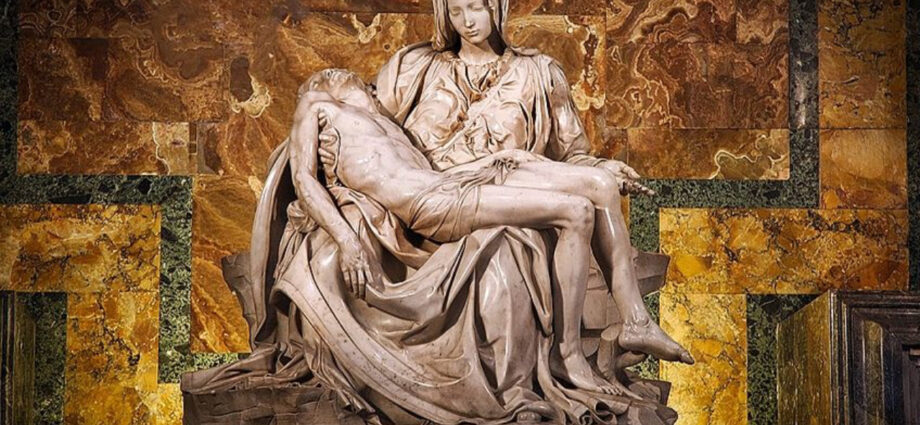Michelangelo’s sculpture series, particularly his masterpiece known as the Pieta, is often regarded as the ultimate in art for several compelling reasons. Here are some key aspects that contribute to its esteemed status:
Technical Mastery :
Michelangelo’s sculptural skills are widely recognized as extraordinary. The level of craftsmanship and precision displayed in the Pieta is awe-inspiring. The delicate folds of the fabric, the intricate detailing of the figures, and the lifelike expression of emotion all demonstrate his exceptional technical prowess.
Emotional Depth :
The Pieta evokes profound emotions in viewers. The sculpture depicts the body of Jesus Christ cradled in the arms of his mother, Mary, after his crucifixion. Michelangelo masterfully captures the grief, tenderness, and sorrow of the scene, evoking a powerful emotional response from viewers. The ability to convey such deep emotions through stone is considered a remarkable achievement.
Spiritual and Religious Significance :
The subject matter of the Pieta holds immense spiritual and religious significance. It portrays a pivotal moment in Christian theology—the sorrowful aftermath of Christ’s sacrifice for humanity. Michelangelo’s ability to imbue the sculpture with a sense of divine grace and spiritual contemplation elevates its status as a profound religious artwork.
Aesthetic Beauty :
The Pieta is renowned for its sheer beauty. The harmonious composition, elegant lines, and balanced proportions create a visually captivating sculpture. The work embodies the ideal of beauty as envisioned by Renaissance artists, showcasing the human form in its most perfect and harmonious state.
Historical and Cultural Importance :
Michelangelo’s Pieta holds a significant place in art history and cultural heritage. It represents a pinnacle of Renaissance art, showcasing the era’s emphasis on humanism, naturalism, and the revival of classical ideals. The sculpture has been admired and studied by countless artists, scholars, and art enthusiasts over the centuries, influencing subsequent generations of sculptors.
Symbolism and Iconography :
The Pieta incorporates symbolic elements that enrich its meaning. Mary’s serene expression represents her acceptance of God’s plan, while Jesus’ body signifies his ultimate sacrifice for humanity. The sculpture’s composition also conveys themes of compassion, redemption, and the eternal bond between mother and son.
The combination of technical excellence, emotional depth, spiritual significance, aesthetic beauty, historical importance, and symbolism contribute to the Pieta’s reputation as the ultimate in art. It is a testament to Michelangelo’s genius and continues to inspire and captivate audiences with its timeless and profound message.











